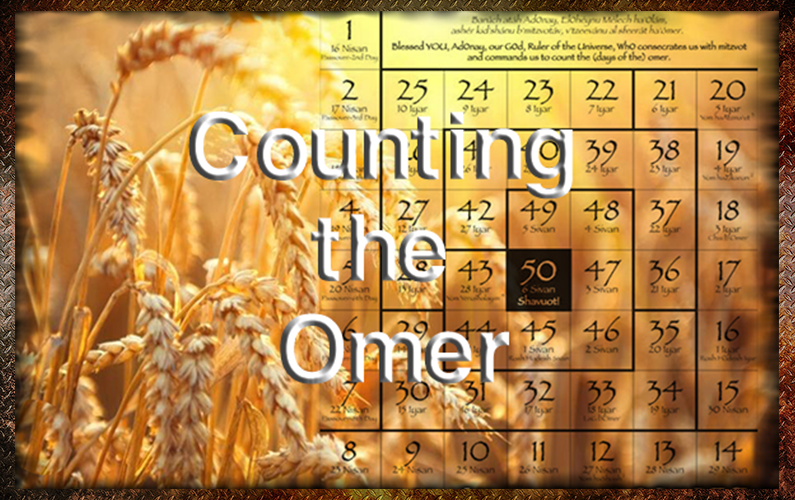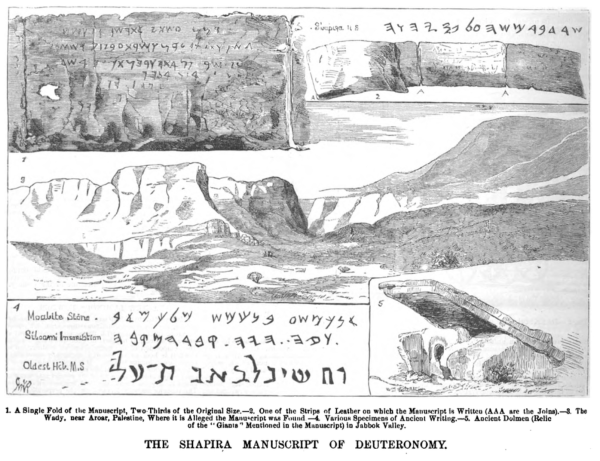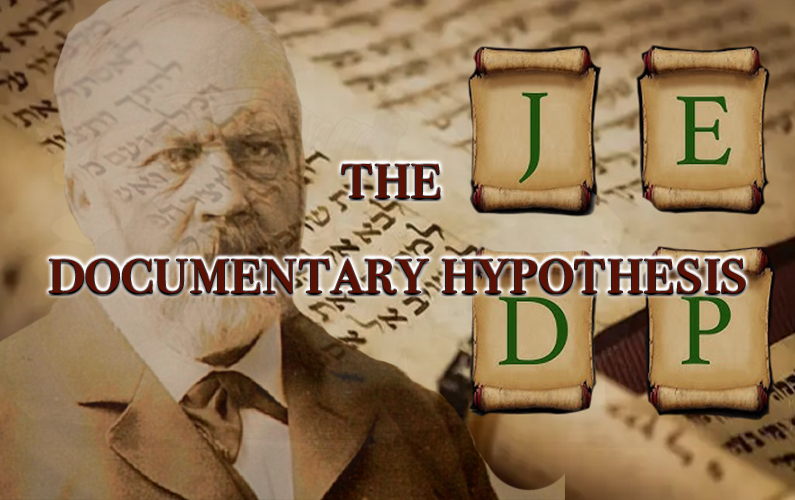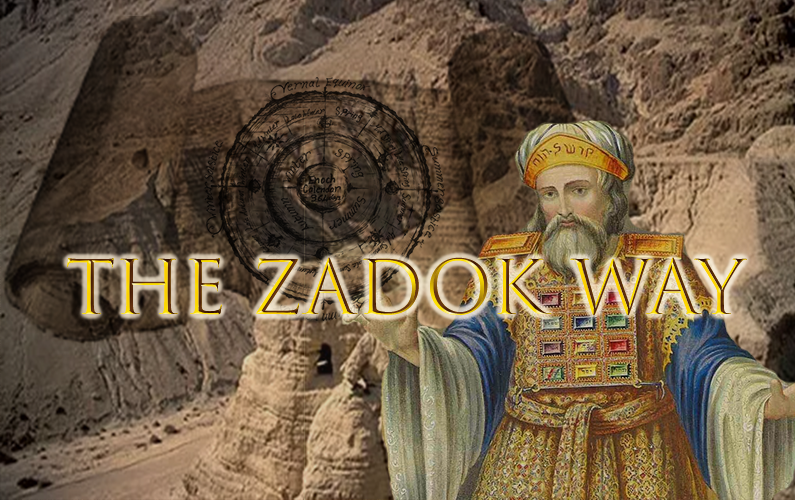I’m surprised how often I read online someone making the assertion that the Documentary Hypothesis is dead. “The JEPD theory is no longer dominant,” remarked one recent commentator, “now biblical scholars look towards community authorship or single authorship of the Pentateuch with supplementation.”
I’m not sure where precisely this idea stems from, but it’s certainly not correct. My concern is that it seems to be expressed most frequently by religious commentators seeking to defend a type of inspired unity to the work that can be traced back to Mosaic authorship, or if not that far, the death of the DH at least supports a more traditional religious reading of the work.
The DH traces its intellectual roots to the rise of 17th century European rationalism. European rationalism transformed the traditional approach of interpreting the Bible as privileged text. During this era, several European philosophers who considered reason to be the ultimate source for human knowledge began questioning many long-held assumptions regarding the Bible, including the concept of biblical inerrancy.
Rather than reading the Bible as a scriptural text that requires its own special rules to explain or cover-up inconsistencies, philosophers such as Baruch Spinoza, Thomas Hobbes, and Thomas Paine interpreted the text according to the standard rules of logic. For example, a slave law in Exodus 21:6 states that some slaves should serve their masters “forever.” This statement, however, directly contradicts the slave law in Leviticus 24:40, which states that all slaves must be released every fiftieth year (the year of Jubilee).
Not wanting to see these laws as contradictions, later Jewish rabbis attempted to reconcile the two passages by stating that the word “forever” really means “practically, but not literally forever”—in other words, simply until the year of Jubilee.[1] In contrast to this approach, which had been adopted by Jewish and Christian interpreters alike, European rationalists began arguing that if a text like Exodus 21 said “forever,” it should be read as “forever,” and that the two laws were simply at odds with one another. In other words, they began to treat the Bible like a real book that could contain historical anachronisms and inconsistencies.[2] The Bible was not simply inerrant scripture that needed to be harmonized.
This new “enlightened” approach to reading the Bible produced a German school of interpretation in the theology departments of Protestant universities. The most influential member of this intellectual school was the German scholar Julius Wellhausen. In 1878, Wellhausen synthesized previous scholarly discoveries in Higher Criticism through the publication of his highly influential book Prolegomena to the History of Ancient Israel.[3] Ultimately, Wellhausen’s work did for biblical scholarship what Darwin’s Origin of the Species accomplished for natural science. As Darwin’s concept of evolutionary adaptation through natural selection has become central to modern evolutionary theory, so Wellhausen’s work on historical criticism provides the foundation for modern scholarly assessments of the Bible.
In order to take seriously the inconsistencies found throughout the Bible’s first five books, Prolegomena broke up the Pentateuch into separate sources that Wellhausen dated to specific times in Israelite history. He then put those sources back together again according to his own theory regarding the evolution of Israelite religion. Though in the years that followed, not all of Wellhausen’s interpretations of the development of biblical sources have been accepted, as of today almost all contemporary biblical scholars recognize that the first five books of the Bible were not written by a single author and that they are in fact a compilation of separate sources composed by different schools of thought.
When commentators speak of the “death of the DH,” they often draw this conclusion from criticism raised in recent years by European scholars. This new school of continental scholarship in part traces its origins to the work of Rolf Rendtorff, who raised important questions regarding the combination of tradition history and source criticism in the manner commonly assumed in critical Pentateuchal scholarship.[4] Rendtorff rejected the traditionally accepted premise of a Yahwistic author writing during the Israelite monarchal period. Similar arguments were then raised in the late 1980’s and early 1990’s by scholars such as Albert de Pury and Thomas Römer who likewise maintained that the original literary basis of the Pentateuch did not result from a Yahwistic source produced during the monarchy. Instead, de Pury and Römer suggested that the Pentateuch derived primarily from the writings of a Priestly author working in the post-exilic era.[5] In terms of European studies, these ideas have played a significant role in the development of various theories regarding the historical development of the first five books of the Hebrew Bible.[6]
In recent years, many continental scholars have abandoned the traditional theory of documentary sources in the Pentateuch as a relevant model for explaining its development, and in its place adopted a “Fragmentary” or “Supplementary” Hypothesis.[7] These theories have called into question many previously held assumptions by source critics, including the nature and even existence of sources such as J and E. Continental scholars have differed lately in their views of documentary sources and fragmentary supplements within the Pentateuch, especially in relationship to Genesis 1-11.[8] They have mostly done away with J, E, and to some extent, even P.[9]
This does not mean, however, that continental studies have entirely rejected the basic premise of separate sources within the Pentateuch. “The newer contributions to Pentateuchal research from Europe do not aim at overthrowing the Documentary Hypothesis,” writes Konrad Schmid, “rather, they strive to understand the composition of the Pentateuch in the most appropriate terms, which… includes ‘documentary’ elements as well.”[10] Moreover, the documentary approach still has a strong following in North American and Israeli scholarship and new arguments have been put forward recently reaffirming its validity (Baden, Schwartz, Stackert, Hendel, and Friedman, among others).[11]
The truth is that the DH is far from dead. While there have been some important criticisms of the traditional DH presented in recent years, even European critics have not entirely abandoned the idea that the Pentateuch is a compilation of “documents.” P, for example, is now almost universally recognized as an independent source as is D. Hence, what we call these sources (for example, P, J, E, and D) really doesn’t matter. There will always be some differences in the way scholars divide them up (documents versus fragments, etc.).
To share my own feelings, rather than supplementary fragments, I’m convinced that J and E were also independent narratives. My view is based upon the fact that when these narratives are extracted from P, there is a readability factor that consistently ties the sources thematically and linguistically together as a unified whole. And, as biblical scholar William Propp has explained, the repetition of duplicative stories throughout the Pentateuch points towards separate, stand alone documents rather than supplemental insertions:
“Why must we be told twice of the corruption of the antediluvian earth (Gen. 6:5; 11-12)? Why should Noah be twice commanded to enter the ark (Gen. 6:18, 7:1), and why must he do so twice (Gen. 7:7,13)? Why must we be told twice that all life perished (Gen. 7:21, 22-23)? Why should Jacob twice receive the name Israel (Gen. 32:29, 35:10)? Why must Yahweh tell Moses twice that he has heard Israel’s cry (Ex. 3:7, 6:5)? Do we need a new plague of kinnîm [‘nats’] (Ex. 7:12-15) before ‘ārōb [‘swarm’] (Ex. 7:15-28), given the apparent synonymity (see Ps. 105:31)? Why should the spies twice describe the giants of Canaan (Num. 13:28, 32-33)? Why are the Israelites twice condemned to die in the desert (Num. 14:23, 28-35)? A few redundancies might be attributed to different sensibilities on the part of the supplementer, a few inconsistencies to absence of mind. A wholesale pattern of redundancy and contradiction is another matter.”[12]
The DH is not dead. And it’s not going anywhere.
For those interested in a recent academic defense of the Documentary Hypothesis, I would highly recommend Joel S. Baden’s work The Composition of the Pentateuch: Renewing the Documentary Hypothesis (New Haven: Yale University Press, 2012).
……………………………………………………….
For well over two centuries the question of the composition of the Pentateuch has been among the most central and hotly debated issues in the field of biblical studies. In this book, Joel Baden presents a fresh and comprehensive argument for the Documentary Hypothesis. Critically engaging both older and more recent scholarship, he fundamentally revises and reorients the classical model of the formation of the Pentateuch. Interweaving historical and methodological chapters with detailed textual case studies, Baden provides a critical introduction to the history of Pentateuchal scholarship, discussions on the most pressing issues in the current debate, and a practical model for the study of the biblical text.
Source: Publisher
……………………………………………………….
[1] See Marc Zvi Brettler, How to Read the Bible (Philadelphia: Jewish Publication Society, 2005), 2.
[2] New Testament scholar Bart Ehrman expresses this notion of the Bible as “real book” rather than inerrant scripture with these words: “Since the Bible is a book, it makes better sense to approach it the way one approaches books. There are certainly books in the world that don’t have any mistakes in them. But no one would insist that a particular phone book, chemistry textbook, or car instruction manual has absolutely no mistakes in it before reading it to see whether it does or not. Rather than thinking that the Bible cannot have mistakes, before looking to see if it does, why not see if it does, and only then decide whether it could. . . . If God created an error free book then it should be without errors. If what we have is not an error-free book, then it is not a book that God has delivered to us without errors.” Bart D. Ehrman, Forged: Writing in the Name of God—Why the Bible’s Authors Are Not Who We Think They Are (New York: HarperOne, 2011), 117.
[3] Historically, the identification of textual duplicates led to the view of the Pentateuch as an amalgamation of separate sources. An early advocate of this position was Richard Simon (1638-1712). Simon maintained that the Pentateuch consisted of various documents, some of which derived from Moses, but most he attributed to Ezra in the post-exilic period. Following Simon, Jean Astruc (1684-1766) expressed the view that two separate sources appear in the book of Genesis, one that used Elohim (God) and the other the divine name Yahweh (Lord). In his articulation of source criticism, Astruc argued against the traditional view that Moses complied the Pentateuch. Astruc’s analysis prepared the way for further discussion concerning whether these sources were documents or simply fragments combined from other sources. These studies prepared the way for Wellhausen’s ground-breaking synthesis of the Documentary Hypothesis. For a basic history, see Anthony F. Cambell and Mark A. O’Brien, Sources of the Pentateuch: Texts, Introductions, Annotations (Minneapolis: Fortress Press, 1993), 1-9.
[4] Rolf Rendtorff, Das überlieferungsgeschichtliche Problem des Pentateuch (BZAW 147; Berlin: de Gruyter, 1977).
[5] Albert de Pury, “Le Cylce de Jacob comme légende autonome des origines d’Israël,” in Congress Volume: Leuven, 1989 (ed. J.A. Emerton; VTSup 43; Leiden: Brill, 1991), 78-96; idem, “Osée 12 et ses implications pour le débat actuel sur le Pentateuque,” in Le Pentateuque: Débats et recherches (ed. P. Haudebert; LD 151; Paris: Cerf, 1992), 175-207; Albert de Pury, “Yahwist (“J”) Source,” ABD 6:1012-1020; Thomas Römer, Israels Väter: Untersuchungen zur Väterthematik im Deuteronomium und in der deuteronomistischen Tradition (OBO 99; Fribourg: Universitätsverlag; Göttingen: Vandenhoeck & Ruprecht, 1990).
[6] See the collection of essays provided in Thomas B. Dozeman and Konrad Schmid, eds., Farewell to the Yahwist?: Composition of the Pentateuch in Recent European Interpretation (SSS 34; Atlanta: SBL, 2006).
[7] The so-called Fragmentary Hypothesis was inaugurated by Johann Severin Vater in his work Commentar über den Pentateuch: Mit Einleitungen zu den einzelnen Abschnitten, der eingeschalteten Übersetzung von Dr. Alexander Geddes’s merkwurdigeren critischen und exegetischen Anmerkungen, und einer Abhandlung über Moses und Verfasser des Pentateuchs (Halle: Waisenhaus-Buchhandlung, 1802-1805), see especially 393-394.
[8] Blenkinsopp, for example, maintains that Genesis 1-11 was originally conceived as a distinct composition with its own structure and that J is an addition to P; see Blenkinsopp, Creation Uncreation Recreation. For another continental critique of the Documentary Hypothesis arguing that pre-Priestly material was added by a subsequent redactor, see Konrad Schmid, Genesis and the Moses Story: Israel’s Dual Origins in the Hebrew Bible (trans. James Nogalski; Winona Lake, IN: Eisenbrauns, 2010).
[9] In the current European discussion, most scholars consider P a source document; see for example, Norbert Lohfink, “Die Priesterschrift und die Geschichte,” in Studien zum Pentateuch (SBAB 4; Stuttgart: Katholisches Bibelwerk, 1988), 213-253; Walter Gross, “Bundeszeichen und Bundesschluß in der Priesterschrift,” TTZ 87 (1987): 98-115; Walter Gross, “Die Wolksule und die Feuersäule in Ex 13 + 14: Literarkritisäche, redaktionsgeschichtliche und quellenkritische Erwägungen,” in Biblische Theologie und gesellschaftlicher Wandel (eds. Georg Braulik et al.; Freiburg: Herder, 1993), 142-165; Peter Weimar, “Struktur und Komposition der priesterschriftlichen Geschichtsdarstellung,” BN 23 (1984): 81-134; Bernd Janowski, Sühne als Heilsgeschehen: Studien zur Sühnetheologie der Priesterschrift und zur Wurzel KPR im Alten Orient und im Alten Testament (Neukirchen-Vluyn: Neukirchener Verlag, 1982), 8-9, n. 51; Koch, “P-Kein Redaktor! Erinnerung an Zwei Eckdaten Der Quellenscheidung”: 446-467; John Adney Emerton, “The Priestly Writer in Genesis,” JTS 39 (1988): 381-400; Christian Streibert, Schöpfung bei Deuterojesaja und in der Priesterschrift: Eine vergleichende Untersuchung zu Inhalt und Funktion schöpfungstheologischer Aussagen in exilisch-nachexilischer Zeit (Frankfurt A. M.: Peter Lang, 1993), 46-47; Ludwig Schmidt, Studien zur Priesterschrift (Berlin: de Gruyter, 1993), 4-10, 34; Eckart Otto, “Die nachpriesterschriftliche Pentateuchredaktion im Buch Exodus,” in Studies in the Book of Exodus: Redaction-Reception-Interpretation (ed. Marc Vervenne; Leuven: Leuven University Press, 1996), 61-111. A major exception to this trend is Erhard Blum, Studien zur Komposition des Pentateuch (Berlin: de Gruyter, 1990). For additional bibliography, see Konrad Schmid, “Has European Scholarship Abandoned the Documentary Hypothesis? Some Reminders on Its History and Remarks on Its Current Status,” in The Pentateuch: International Perspectives on Current Research (eds. Thomas Dozeman et al.; FAT 78; Tübingen: Mohr Siebeck, 2011), 17-18, n. 6.
[10] Schmid, “Has European Scholarship Abandoned the Documentary Hypothesis?,” 17-18.
[11] See, for example, Joel S. Baden, J, E, and the Redaction of the Pentateuch (FAT 68; Tübingen: Mohr Siebeck, 2009); Baruch J. Schwartz, “The Priestly Account of the Theophany and Lawgiving at Sinai,” in Texts, Temples, and Traditions: A Tribute to Menachem haran (ed. Michael Fox; Winona Lake, IN: Eisenbrauns, 1996), 103-134; Jeffrey Stackert, Rewriting the Torah: Literary Revision in Deuteornomy and the Holiness Legislation (FAT 52; Tübingen: Mohr Siebeck, 2007); Richard Elliot Friedman, The Bible with Sources Revealed: A New View into the Five Books of Moses (San Francisco, CA: HarperSanFrancisco, 2003), 160-161; Ronald S. Hendel, “Leitwort Style and Literary Structure in the J Primeval Narrative,” in Sacred History, Sacred Literature: Essays on Ancient Israel, the Bible, and Religion in Honor of R.E. Friedman on His Sixtieth Birthday (ed. Shawna Dolansky; Winona Lake: Eisenbrauns, 2008), 93-109.
[12] William H. Propp, “The Priestly Source Recovered Intact?,” VT 46 (1996): 460; emphasis added.
https://www.patheos.com/blogs/davidbokovoy/2014/01/the-death-of-the-documentary-hypothesi













